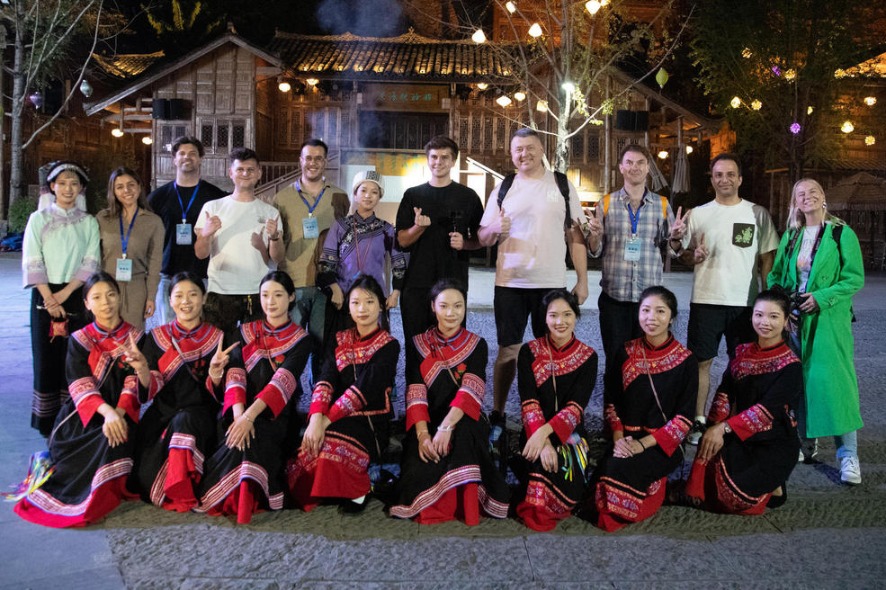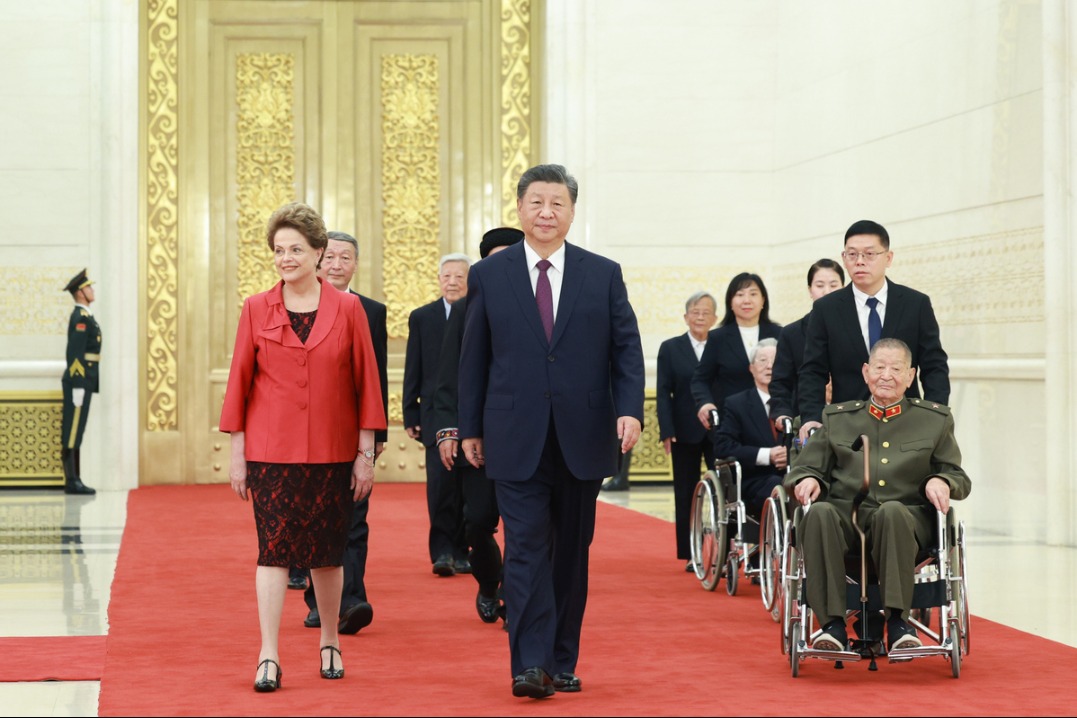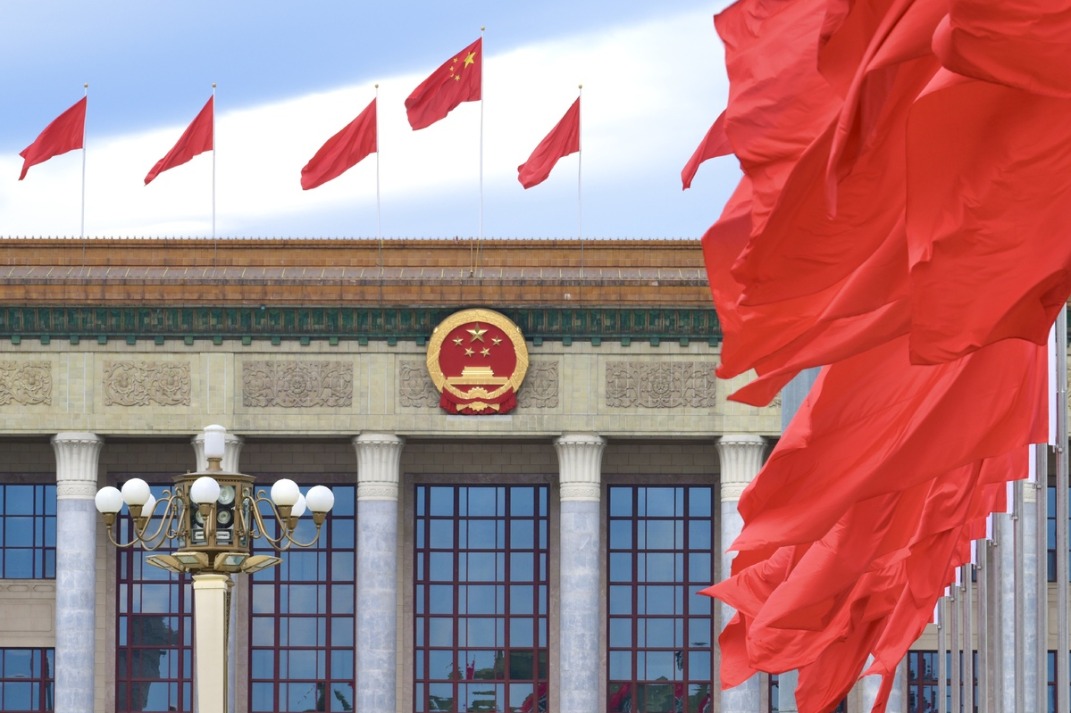China is ushering in a new era of innovation
By Edward Tse | China Daily Global | Updated: 2024-07-17 09:08
Every day we read about some innovation or the other taking place in China.
Over the past couple of months, there have been reports of Chinese electric vehicle manufacturer BYD unveiling a new car model that runs on plug-in hybrid technology and can travel continuously for over 2,000 kilometers without charging; diversified tech player Huawei announcing its Harmony operating system, and companies like UBTech and SenseTime, as well as Huawei, introducing new versions of humanoid AI robots that boast way more capabilities than before.
Innovations are taking place at the State level too. The Chang'e 6 mission that landed on the far side of the moon made history. The China Sky Eye, a 500-meter-diameter radio telescope, has discovered more than 900 new pulsars, and the artificial sun Huanliu-3 (HL-3) tokamak discovered an advanced magnetic field structure for the first time in the world. Development of the magnetic levitation train technology that can travel up to 620 kilometers per hour is now in the pilot test phase. The central bank's digital currency, e-CNY, is expanding its pilot testing, paving the way for fintech to be more broadly applied across China and in cross-border transactions.
In 2023, China authorized 921,000 invention patents, a year-on-year increase of 15.3 percent. The 2023 Global Innovation Index Report released by the World Intellectual Property Organization shows that China has 24 of the world's top 100 technology clusters. The Economist now calls China a "scientific superpower".
Once, people would say because China doesn't follow the Western-style political system, it can't be innovative. However, when my book China's Disruptors came out in 2015, many readers were surprised to learn that the Chinese had begun to demonstrate that they could be, and have been, innovative. For me, that book was probably already five years too late because well before that, I had begun to see signs of, or at least intentions of, innovations by the Chinese. I saw something about the Chinese and their potential ability and inclination to innovate. I was trying to understand when and why innovation would manifest in China, as well as what and how.
In the book, many of the cases were about companies engaged in wireless internet. They would leverage that as a platform to generate new business models that addressed pain points in the society at that time. Many successful companies evolved as a result.
As the wireless internet began to run out of steam, the Chinese shifted gears to "hard tech" innovations. Despite the fact that the United States imposed sanctions on China in many areas on the tech front, China has seen the rapid development of disruptive technologies such as artificial intelligence, robotics and automation, as well as blockchain technology.
Along the way, China has changed the focus of its innovation from the internet-based platform economy, which is driven by the wireless internet, to a digital economy as defined by hard tech and digital technology.
China has now become the world's leading producer of electric vehicles and battery tech. China has also become a leader in the manufacturing of solar panels and wind turbines, as well as in shipbuilding. It has also taken a leadership position in robotics and automation.
Because of the US sanctions on semiconductor chips, the Chinese have been focusing on this sector with the aim of achieving self-reliance and breakthrough in high-end chips. The central government has provided lots of support for this sector. China recently launched its largest-ever semiconductor fund, investing 344 billion yuan ($48 billion) to boost its domestic industry.
Unlike the wireless internet era in which most of the innovations were about business models, the innovations in the current era often include real technology breakthroughs and their applications. While fundraising for internet-based business model innovations could often be achieved by storytelling, that for the current stage of tech-driven innovations needs much more solid evidence of whether the innovations could actually work.
It's a different world.
The new requirements have not deterred people or organizations from trying to make it. Unicorns in the generative AI space in China are popping up. Startups such as Moonshot AI, Mini-Max, and Baichuan AI have grown into unicorns, becoming role models for others to come. After several years of downturns, venture capital companies have become active again in China, looking for good deals in the new areas of innovation.
Private sector entrepreneurs are emerging again in large numbers, many of whom are pretty young, and they are trying to capture a piece of the action. Some entrepreneurs are teaming up with State-owned companies and/or local governments in pursuit of new ideas.
So while the internet space seems to have run its course and the EV sector has become overly crowded and hypercompetitive, new lanes such as AI, robotics and automation, intelligent manufacturing and low-altitude aviation are close to, or right at, their upward inflection points. More innovation and entrepreneurship will come from these sectors. And I think that's the essence of what the Chinese are calling "new quality productive forces", or simply technological innovation. That's the key to China's high-quality growth. I expect this will continue to manifest itself not only within China but also beyond its borders into other countries, especially those in the Global South.
The author is founder and CEO of Gao Feng Advisory Company, a strategy and management consulting firm with roots in China.
























